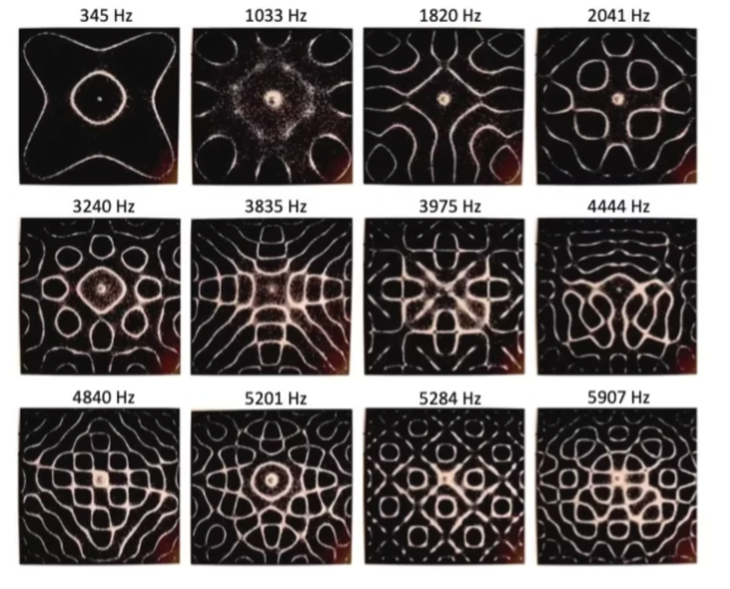How Music Hijacks Your Nervous System—in a Good Way
Music is trans-dimensional, having the power to affect body, mind, and soul. It transforms through process called resonance, making it a conductor of human biology, physical matter, and the human psyche. To understand the concept of resonance, we need to understand what music is at a fundamental level. This article explores music and its interpersonal connection through the science of resonance, an understanding that changes our conception of music, its nature, and effects.
Sound is energy.
Sound is energy and vibration in motion. This means that music’s physical qualities and mediums (sound, instruments, performance) creates non-physical waves which travel through air (sound waves), impacting things (us, objects, the world). Physics tells us that sound waves transmit energy through vibrations in our atmosphere. For example, when I strike a drum, energy extends from the drumhead as vibrations in the air, impacting the external environment. Cymatics is the study of the visible effects of sound and vibration, and it shows us how this works in practice. Sound produces waves in the atmosphere that can be visualised using sand on a Chladni plate. Figure 1.1 shows the geometric patterns created by different sound frequencies impacting sand on a Chladni plate. Music is more complex, consisting of a wide variety of sound frequencies organised into complex patterns.
Figure 1.1: Sound frequency patterns on a Chladni plate
Music produces resonance with other beings and things.
Music uses a complexity of sound frequencies to affect the world around us. One of the powerful ways it interacts with matter and mind is through resonance. Resonance is the phenomenon where a system’s natural or preferred frequency is induced or driven by an external force of the same frequency. This means that sound frequencies can affect other objects through mutual attraction or magnetism. In music, this occurs when a sound stimulus evokes a response in a biological or mechanical system due to alignment with the systems natural or preferred frequencies. This means that music has the capability to evoke a frequency response from a biological system, such as a body, or a mechanical system, such as a musical instrument. This may occur in a variety of ways as follows:
1) Physical resonance: Sound waves cause sympathetic vibrations in air, instruments, or body cavities, such as chests and bones.
We see this type of resonance in our modern technologies, such as Ultra-Sound, which uses high-frequency sound waves to break apart kidney stones, detect pregnancies, and perform non-invasive surgeries. Even the earth exhibits electromagnetic resonance on a planet-wide scale, using the cavity between the earth’s crust and space to create resonances of the earth’s fundamental frequency of 7.83 Hz, called the Schumann Resonance.
2) Neural resonance: Occurs when brainwaves patterns (eg, theta, alpha) synchronise with musical rhythms or pulses, known as entrainment.
Studies by Levitan and Vinod (Levitan 2024, p.85) showed that when people listen to the same music, even if not at the same time, a neural synchronicity is created in their brain waves. This means that music puts brains in sync with other brains, literally tunning us to each other!
3) Emotional resonance: Music activates brain regions producing pleasure, catharsis, or emotional stimulation.
Music has the capability to resonate with our minds, activating emotions or memories hidden within our subconscious. The psychologist Heinz Kohut (1957, p.393) suggested that musical resonance is valuable for emotional healing, a practice typically used in religious rituals to access unconscious tension hidden beneath the conscious personality. In a process of resonance, music stimulates hidden layers of tension to produce catharsis and healing through expression of unconscious emotions and memories.
Music is a trans-dimensional technology
These three types of musical resonances demonstrate how music impacts body, brain, and emotions. Sound’s ability to penetrate matter and mind makes it a powerful trans-dimensional force, used by ritual cultures to penetrate the seen and unseen realms of reality. But we don’t have to look to ritual cultures to see the impact of music, we can witness this in our science and everyday lives. Understanding that music plays a critical role in affecting soul, body, and mind through resonance suggests that music creation and performance is really the art of manipulating sound energy. As music makers, creators, and audiences, we can activate this power by changing our perceptions of music’s fundamental nature- as energy vibration in motion. Like radio waves and infrared waves, sound traverses the seen and unseen worlds, having effects on body, brain, and emotions. To learn music is to discover the art of mastering sound energy and developing the skill to impact humans on a physical, biological, and psychological level. This change in perception drastically alters our view of music, of its creators, and of musical experiences, while developing awareness of its importance for culture and of responsibility for creators. Seen as a technology for resonance, music can alter brains and bodies, alter moods, unlock emotions, and transform states of mind, acting as a powerful tool for health, human connection, and transformation.
Thanks for reading. As a gift, here’s a link to a FREE E-BOOK that teaches how to use music to quickly clear emotional and creative blocks, especial useful during life’s transitions.
Consider joining the newsletter for weekly thought-provoking content, and check out the Sound-Soul System, my unique approach to music-making and spiritual development. If you want to go deeper exploring the roots of ritual, psychology, and working with sound for soul development, consider joining to my You Tube Channel where I release in-depth weekly content.
References
Kohut, H., (1957). ‘Observations on the Psychological Functions of Music’, Journal of the American Psychoanalytic Association, 5(3), pp.389-407.
Levitin, D. (2024) Music as Medicine. Cornerstone Press, Penguin Books, UK.

